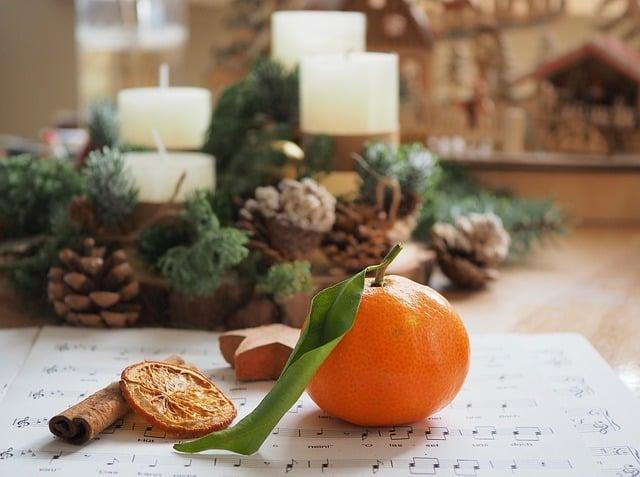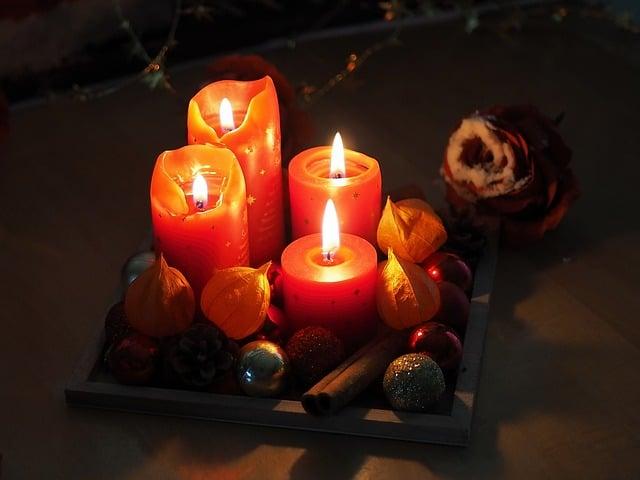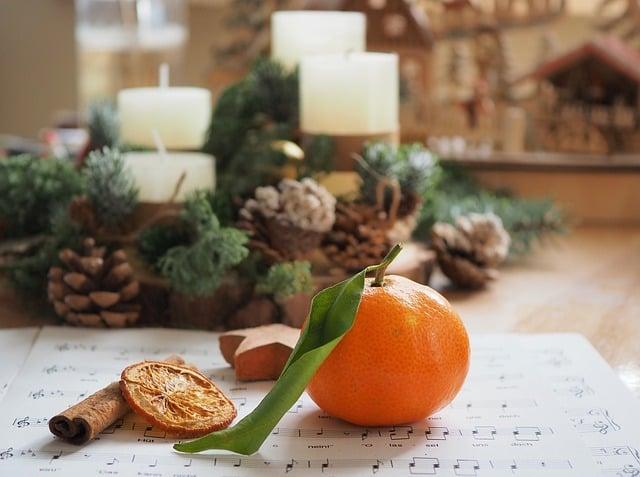As December dawned, Clara eagerly opened the first door of her Advent calendar, revealing a tiny chocolate and a handwritten note: “Each day brings us closer to joy.” Intrigued, she continued to unveil the surprises—small gifts, quotes, and memories. With each door, Clara felt a growing warmth in her heart, a reminder of the anticipation and hope that filled the season. The calendar transformed into a countdown not just to Christmas, but to moments of connection, reflection, and the simple joys that often go unnoticed.
Table of Contents
- Understanding the Tradition Behind Advent Calendars
- Exploring the Symbolism of Each Day in December
- Creative Ways to Personalize Your Advent Calendar Experience
- The Joy of Sharing: Advent Calendars as Gifts and Family Activities
- Q&A

Understanding the Tradition Behind Advent Calendars
The tradition of Advent calendars dates back to the early 19th century, originating in Germany as a way to mark the days leading up to Christmas. Families would create simple calendars, often with chalk marks on doors or walls, to count down the days of Advent, which begins on the fourth Sunday before Christmas. This practice evolved into the beautifully crafted calendars we see today, featuring small doors or windows that conceal treats or messages. Each day, a new door is opened, symbolizing the anticipation and joy of the Christmas season, while also serving as a reminder of the spiritual significance of Advent—a time of preparation and reflection.
Advent calendars have transformed over the years, incorporating various themes and designs that cater to different tastes and preferences. They can be found in a variety of forms, from traditional paper calendars adorned with festive illustrations to elaborate wooden structures filled with chocolates or small gifts. Some modern interpretations even include digital versions, allowing for interactive experiences. Regardless of their form, Advent calendars share a common purpose: to foster a sense of community and connection during the holiday season. They encourage families to come together, share moments of joy, and reflect on the deeper meanings of the holidays, making the countdown to Christmas a cherished tradition.

Exploring the Symbolism of Each Day in December
As December unfolds, each day carries its own unique symbolism, inviting us to reflect on the deeper meanings behind the holiday season. The first day of December often represents **hope**, as it marks the beginning of Advent, a time of anticipation and preparation for the celebration of Christmas. As we progress through the month, each subsequent day can symbolize various themes such as **joy**, **peace**, and **love**, culminating in the celebration of the birth of Christ. The act of opening a door on an Advent calendar each day serves as a reminder to embrace these values, encouraging us to pause and appreciate the beauty of the season.
Moreover, the symbolism of each day can also be linked to the traditions and stories associated with the holiday. For instance, the **12th day** might evoke thoughts of generosity, inspired by the spirit of giving that permeates the season. The **24th day**, often the final day of the countdown, symbolizes **fulfillment**, as it leads us to the joyous celebration of Christmas Eve. Each day, adorned with its own significance, invites us to engage in acts of kindness, reflection, and gratitude, enriching our experience of the month and deepening our connection to the traditions we hold dear.

Creative Ways to Personalize Your Advent Calendar Experience
Transforming your Advent calendar into a personalized experience can be a delightful journey of creativity and thoughtfulness. Start by **customizing the treats** inside each compartment. Instead of the usual chocolates or candies, consider filling them with **handwritten notes**, each containing a cherished memory, a favorite quote, or a small challenge for the day. You could also include **miniature gifts** that reflect the recipient’s interests, such as tiny art supplies for a budding artist or gourmet tea bags for a tea lover. This not only adds a personal touch but also creates a sense of anticipation and excitement as each day unfolds.
Another innovative approach is to incorporate **themed days** throughout the Advent season. For instance, designate certain days for **acts of kindness**, where each compartment holds a suggestion for a small good deed, like donating to a local charity or writing a letter to a friend. Alternatively, you could create **family bonding days**, where each day’s surprise includes a fun activity to do together, such as baking cookies or watching a holiday movie. This not only enhances the festive spirit but also strengthens connections and creates lasting memories, making the countdown to Christmas even more meaningful.

The Joy of Sharing: Advent Calendars as Gifts and Family Activities
Advent calendars have evolved into delightful gifts that bring families together during the festive season. Each day leading up to Christmas becomes a mini celebration, filled with anticipation and joy. The act of opening a door or drawer reveals a small surprise, whether it’s a piece of chocolate, a heartfelt note, or a tiny ornament. This simple ritual fosters a sense of togetherness, as families gather to share in the excitement of what each day holds. The joy of sharing these moments can create lasting memories, making the countdown to Christmas a cherished tradition.
Moreover, Advent calendars can be personalized to reflect the unique interests and preferences of each family member. Consider creating a calendar filled with:
- Handwritten messages that express love and gratitude.
- Small toys or trinkets that cater to individual hobbies.
- Acts of kindness that encourage family members to give back to the community.
- Fun family activities that can be enjoyed together, such as movie nights or baking sessions.
By incorporating these elements, Advent calendars transform into more than just a countdown; they become a canvas for creativity and connection, enriching the holiday experience for everyone involved.
Q&A
-
What is an Advent calendar?
An Advent calendar is a special calendar used to count down the days of Advent, the period leading up to Christmas. It typically starts on December 1st and ends on December 24th, with each day revealing a small gift, treat, or message.
-
What is the origin of Advent calendars?
The tradition of Advent calendars dates back to the 19th century in Germany. They were originally handmade and featured religious images or scriptures, serving as a way to prepare for the celebration of Christmas.
-
How are Advent calendars used today?
Today, Advent calendars come in various forms, including chocolate-filled, toy-filled, or even beauty product-filled versions. They are popular among families and individuals as a fun way to build excitement for Christmas.
-
Can Advent calendars be personalized?
Absolutely! Many people create personalized Advent calendars by filling them with items that reflect their interests or those of their loved ones, making the countdown to Christmas even more special.
As the days of December unfold, an Advent calendar invites us to pause and reflect on the anticipation of the season. Beyond its festive façade, it serves as a reminder of hope, joy, and the beauty of counting down to cherished moments.

大家好,我是彼得潘,專業的手法身體治療師。我喜歡探索和研究各種主題,並透過與人工智慧的合作分享專業、實用、有趣的文章。我們定期進行人工審核,以確保內容的準確性。如果您發現文章中有任何不準確的地方,請隨時與我們聯繫,我們會及時糾正。您可以透過 [email protected] 與我們聯繫。



